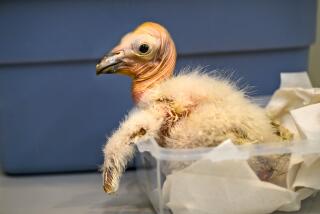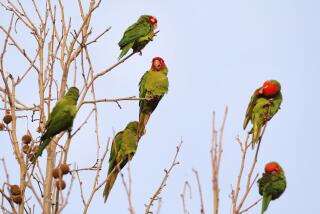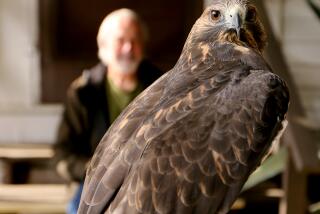Eco-Dollars Talk, but Is Financial Excess Called For?
- Share via
Wildlife tourism and eco-tourism have become big business worldwide (“Is This Bird Worth $20 Million?” by Michael J. Ybarra, Sept. 14). And the California condor is what many biologists call a “charismatic megafauna”--a large animal that always manages to draw a crowd.
Of course, birders and wildlife enthusiasts everywhere would like to see a condor in its native habitat.
If we spend $50 million for restoration, and the condor population stays healthy for just 20 years, it will require only 2,000 wildlife visitors a year, spending $1,250 per trip, to amortize the cost of recovery. And I believe the actual numbers would be a lot better.
Is the condor worth saving? As an environmentalist, I say yes; all species deserve to live. But for Southern California, the condor also means business.
Jim Blomquist, regional representative
Southern California Sierra Club
Los Angeles
qThe late Carl Koford of UC Berkeley, the earliest author and field naturalist on the subject of California conndors, held the view that any eventual recovery plan should emphasize the environment, multiple coexisting species and the needs of the habitat, rather than the more expensive capturing, captive-breeding and release-monitoring efforts that have prevailed.
Matters of cost to date, future expenses and how money is used should be carefully evaluated, especially since extinction for a “difficult” species is a constant evolutionary process, perhaps unworthy of financial excess and extraordinary intervention.
J. Richard Hilton, president
Society for the Preservation of Birds of Prey
Los Angeles
More to Read
Sign up for The Wild
We’ll help you find the best places to hike, bike and run, as well as the perfect silent spots for meditation and yoga.
You may occasionally receive promotional content from the Los Angeles Times.






